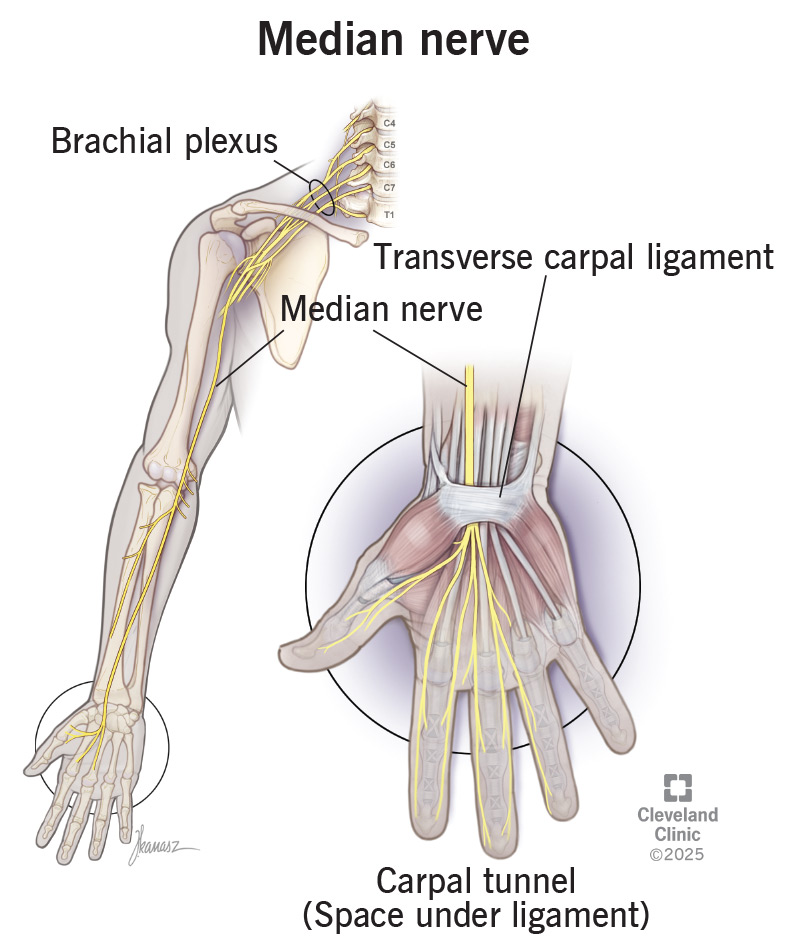Your median nerve provides motor (movement) functions to your forearm, wrist and hand. It also sends touch, pain and temperature sensations from your lower arm and hand to your brain. A pinched median nerve can cause carpal tunnel syndrome. If that happens, you may develop wrist pain and problems grasping and holding items.
Advertisement
Cleveland Clinic is a non-profit academic medical center. Advertising on our site helps support our mission. We do not endorse non-Cleveland Clinic products or services. Policy

Your median nerve helps you move your forearm, wrist, hand and fingers. It also provides sensation to your forearm and certain parts of your hand. (Your forearm is the lower part of your arm that extends from your elbow to your hand.) Pressure on your median nerve can cause carpal tunnel syndrome and other health problems.
Advertisement
Cleveland Clinic is a non-profit academic medical center. Advertising on our site helps support our mission. We do not endorse non-Cleveland Clinic products or services. Policy
If you experience pain, numbness or other sensations in your forearm or wrist that don’t go away, reach out to your healthcare provider. They’ll be able to determine what’s going on and develop a treatment plan for you.
Your median nerve provides sensory and motor (movement) functions to your forearm, wrist and hands. The nerve starts at your armpit, but its functions all take place in your forearm or hand.
Your median nerve stimulates muscles in your forearm, allowing you to:
Your median nerve is also responsible for touch, pain and temperature sensations to the:
Your median nerve is one of five nerve branches of your brachial plexus. This complex network of nerves helps you move your shoulders, arms and hands. It also sends sensory information. Your brachial plexus begins as nerve roots from the cervical spine in your neck. The nerves travel behind your collarbone (clavicle) through your armpit (axilla).
Advertisement
You have a left and right median nerve — one for each side of your body. Your median nerve starts at your armpit and:
Your median nerve branches include:
Pressure on your median nerve can cause a pinched nerve (nerve entrapment) or neuropathy (nerve damage). You may also develop a nerve compression syndrome, like:
Signs of a pinched median nerve include:
You should call your healthcare provider if you experience:
Your median nerves play a critical role in your wrist, hand and finger movements and sensations. When there’s pressure on your median nerve, you may develop carpal tunnel syndrome or other nerve compression issues. This can cause pain, weakness or numbness that can affect your daily life. You don’t have to live with the pain. Make a call to your healthcare provider. They can diagnose the condition and suggest treatments for symptom relief.
Advertisement
From sudden injuries to chronic conditions, Cleveland Clinic’s orthopaedic providers can guide you through testing, treatment and beyond.

Last reviewed on 03/10/2025.
Learn more about the Health Library and our editorial process.